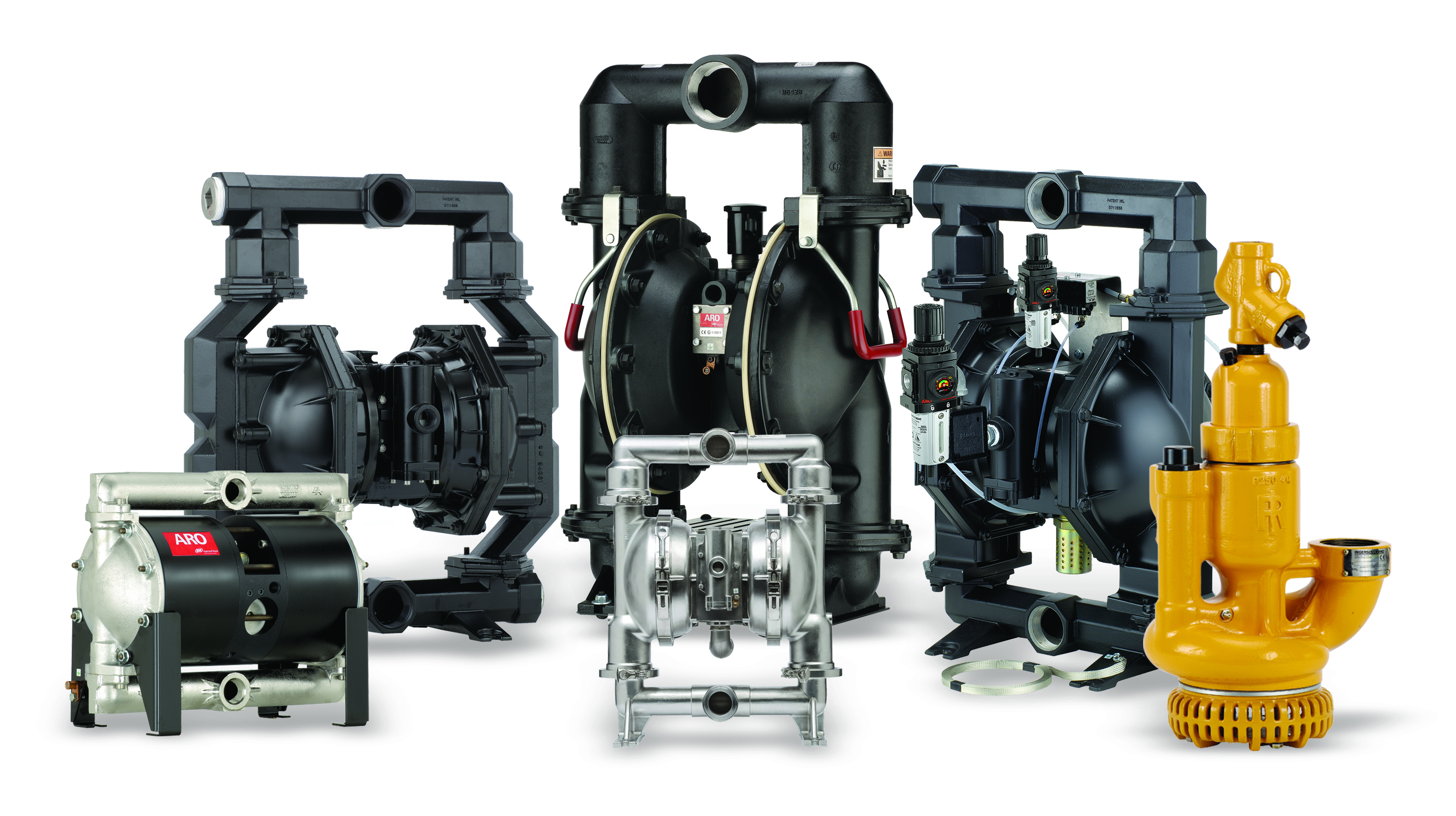
Ingersoll Rand's ARO brand prides itself on the quality and reliability of its AODD pumps. While the specific, proprietary testing protocols for each individual pump model are not always publicly detailed, based on industry standards, ARO's reputation, and general best practices for manufacturing pumps, here's a comprehensive overview of the types of tests and quality control measures ARO pumps undergo before dispatch:
I. Component-Level Quality Control:
* Material Inspection: Incoming raw materials (metals, plastics, elastomers for diaphragms, balls, and seals) are inspected to ensure they meet specified chemical compositions, mechanical properties, and purity standards. This is crucial for corrosion resistance and overall durability.
* Dimensional Checks: Individual pump components (e.g., fluid caps, manifolds, diaphragms, air valve components, hardware) are measured to ensure they adhere to strict dimensional tolerances, ensuring proper fit and function during assembly.
* Surface Finish and Integrity: Components are inspected for defects, burrs, cracks, or imperfections that could affect performance, lead to leaks, or compromise the pump's lifespan.
* Diaphragm and Seal Integrity: Diaphragms, balls, and seals, being critical wear parts, likely undergo rigorous testing to ensure their flexibility, chemical compatibility, abrasion resistance, and absence of manufacturing defects. This might involve visual inspection, durometer testing (for hardness of elastomers), and even batch testing for material properties.
II. Assembly and Sub-Assembly Testing:
* Air Valve Testing: The heart of an AODD pump is its air distribution system (ADS). This complex assembly is likely tested independently to ensure it cycles smoothly, efficiently, and without stalling, as ARO highlights its "unbalanced" air valve design for stall-free operation.
* Leak Testing (Air Side): Sub-assemblies of the air section may undergo pneumatic leak tests to ensure there are no air leaks that would reduce efficiency or lead to pressure drops.
* Torque Verification: Fasteners are tightened to precise torque specifications during assembly. Quality checks might include random torque audits to ensure consistent assembly.
III. Final Pump Performance Testing:
* Functional Test (Dry Run): Each assembled pump is typically subjected to a dry run (without fluid) to ensure the air motor cycles correctly, the diaphragms move freely, and there are no abnormal noises or vibrations. This confirms the basic mechanical operation.
* Hydraulic Performance Test (Wet Test): This is a critical test. Pumps are connected to a test loop and run with a fluid (often water) to verify performance parameters against design specifications. This test would typically involve:
* Flow Rate Verification: Measuring the actual flow rate at various air pressures and discharge pressures to ensure it meets the published pump curves.
* Discharge Pressure Test: Confirming the pump can achieve its rated maximum discharge pressure.
* Suction Lift/Priming Test: Verifying the pump's ability to self-prime from a specified dry lift height.
* Leak Testing (Fluid Side): While operating with fluid, the pump is carefully inspected for any fluid leaks from the fluid caps, manifolds, or diaphragm seals. This often involves visual inspection during operation and potentially pressure hold tests.
* Stall Test/Deadhead Test: AODD pumps are designed to "deadhead" (stop cycling when the discharge is closed) without damage. This test verifies this capability and ensures the pump restarts smoothly when the discharge is opened again.
* Smooth Operation and Noise Levels: Monitoring for consistent cycling, absence of cavitation (if applicable), and acceptable noise levels.
* Pressure Retention Test: The pump might be pressurized with air on the fluid side (with the discharge closed) to check for pressure decay, indicating internal leaks past the check balls or diaphragms.
* Vibration Analysis: In some cases, vibration levels might be monitored to ensure they are within acceptable limits, indicating balanced operation and proper assembly.
IV. Documentation and Certification:
* Serial Number Tracking: Each pump typically has a unique serial number for traceability, allowing ARO to track manufacturing data, test results, and material batches.
* ATEX Certification Compliance: For pumps intended for hazardous environments, compliance with ATEX directives (or other relevant explosion-proof certifications like NEC/CEC) is a critical aspect. This involves design compliance and potentially specific testing procedures to ensure safety in explosive atmospheres.
* Quality Documentation: Records of all tests performed, including pass/fail criteria, are maintained for quality assurance and future reference.
By implementing these rigorous testing procedures, ARO aims to ensure that every pump leaving their facility meets their high standards for performance, reliability, and safety, providing customers with a dependable fluid handling solution.
Contact us today for a consultation or browse our website www.aoddpumpsindia.com
Call Us @ 81414 04000
You can also mail us enquirypumps@gmail.com